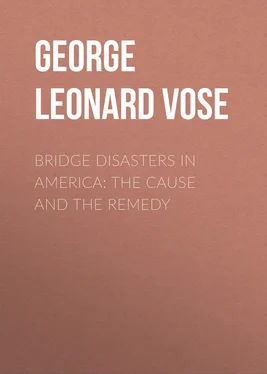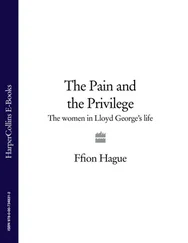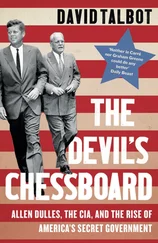George Vose - Bridge Disasters in America - The Cause and the Remedy
Здесь есть возможность читать онлайн «George Vose - Bridge Disasters in America - The Cause and the Remedy» — ознакомительный отрывок электронной книги совершенно бесплатно, а после прочтения отрывка купить полную версию. В некоторых случаях можно слушать аудио, скачать через торрент в формате fb2 и присутствует краткое содержание. Жанр: foreign_antique, Технические науки, на английском языке. Описание произведения, (предисловие) а так же отзывы посетителей доступны на портале библиотеки ЛибКат.
- Название:Bridge Disasters in America: The Cause and the Remedy
- Автор:
- Жанр:
- Год:неизвестен
- ISBN:нет данных
- Рейтинг книги:3 / 5. Голосов: 1
-
Избранное:Добавить в избранное
- Отзывы:
-
Ваша оценка:
- 60
- 1
- 2
- 3
- 4
- 5
Bridge Disasters in America: The Cause and the Remedy: краткое содержание, описание и аннотация
Предлагаем к чтению аннотацию, описание, краткое содержание или предисловие (зависит от того, что написал сам автор книги «Bridge Disasters in America: The Cause and the Remedy»). Если вы не нашли необходимую информацию о книге — напишите в комментариях, мы постараемся отыскать её.
Bridge Disasters in America: The Cause and the Remedy — читать онлайн ознакомительный отрывок
Ниже представлен текст книги, разбитый по страницам. Система сохранения места последней прочитанной страницы, позволяет с удобством читать онлайн бесплатно книгу «Bridge Disasters in America: The Cause and the Remedy», без необходимости каждый раз заново искать на чём Вы остановились. Поставьте закладку, и сможете в любой момент перейти на страницу, на которой закончили чтение.
Интервал:
Закладка:
George L. Vose
Bridge Disasters in America: The Cause and the Remedy
BRIDGE DISASTERS IN AMERICA
Nearly all of the disasters which occur from the breaking down of bridges are caused by defects which would be easily detected by an efficient system of inspection. Not less than forty bridges fall in the United States every year. No system of public inspection or control at present existing has been able to detect in advance the defects in these structures, or to prevent the disasters. After a defective bridge falls, it is in nearly every case easy to see why it did so. It would be just about as easy, in most cases, to tell in advance that such a structure would fall if it ever happened to be heavily loaded. Hundreds of bridges are to-day standing in this country simply because they never happen to have received the load which is at any time liable to come upon them.
A few years ago an iron highway bridge at Dixon, Ill., fell, while a crowd was upon it, and killed sixty persons. The briefest inspection of that bridge by any competent engineer would have been sure to condemn it. A few years later the Ashtabula bridge upon the Lake Shore Railroad broke down under an express train, and killed over eighty passengers. The report of the committee of the Ohio Legislature appointed to investigate that disaster concluded, first, that the bridge went down under an ordinary load by reason of defects in its original construction; and, secondly, that the defects in the original construction of the bridge could have been discovered at any time after its erection by careful examination. Hardly had the public recovered from the shock of this terrible disaster when the Tariffville calamity added its list of dead and wounded to the long roll already charged to the ignorance and recklessness which characterize so much of the management of the public works in this country.
There are many bridges now in use upon our railroads in no way better than those at Ashtabula and Tariffville, and which await only the right combination of circumstances to tumble down. There are, by the laws of chance, just so many persons who are going to be killed on those bridges. There are hundreds of highway bridges now in daily use which are in no way safer than the bridge at Dixon was, and which would certainly be condemned by five minutes of competent and honest inspection. More than that, many of them have already been condemned as unfit for public use, but yet are allowed to remain, and invite the disaster which is sure to come. Can nothing be done to prevent this reckless and wicked waste of human life? Can we not have some system of public control of public works which shall secure the public safety? The answer to this question will be, Not until the public is a good deal more enlightened upon these matters than it is now.
It has been very correctly remarked, that, in order to bring a disaster to the public notice, it must be emphasized by loss of life. The Ashtabula bridge fell, and killed over eighty persons; and a storm of indignation swept over the country, from one end to the other. No language was severe enough to apply to the managers of the Lake Shore Railroad; but if that very bridge had fallen under a freight-train, and no one had been injured, the occurrence would have been dismissed with a paragraph, if, indeed, it had received even that recognition. In February, 1879, a span one hundred and ten feet long of an iron bridge on the Chicago and Alton Railroad at Wilmington fell as a train of empty coal-cars was passing over it, and three cars were precipitated into the river, a distance of over thirty feet. No one was injured. Not a word of comment was ever made in regard to this occurrence. Suppose, that, in place of empty coal-cars, the train had consisted of loaded passenger-cars, and that one hundred persons had been killed. We know very well what the result would have been. Is not the company just as much to blame in one case as the other? On the night of the 8th of November, 1879, one span of the large bridge over the Missouri at St. Charles gave way as a freight-train was crossing it, and seventeen loaded stock-cars fell a distance of eighty feet into the river. Two brakemen and two drovers were killed. This bridge, says the only account that appeared in the papers, did not break apparently, for the whole span "went down" with the cars upon it. It could hardly make much difference to the four men who were killed, whether the bridge broke down, or "went" down. Not a word of comment was ever made in the papers outside of Missouri in regard to this disaster. Suppose, that, in place of seventeen stock-cars, half a dozen passenger-cars had fallen from a height of eighty feet into the river, and that, in place of killing two brakemen and two drovers, two or three hundred passengers had been killed. Is not the public just as much concerned in one case as in the other?
Suppose that a bridge now standing is exactly as unsafe as the Ashtabula bridge was the day before it fell, would it be possible to awaken public attention enough to have it examined? Probably not. About two years ago an attempt was made to induce one of the leading dailies in this country to expose a wretchedly unsafe bridge in New England. The editor declined, on the ground that the matter was not of sufficient interest for his readers; but less than a month afterwards he devoted three columns of his paper to a detailed account of a bridge disaster in Scotland, and asked why it was that such things must happen, and if there was no way of determining in advance whether a bridge was safe, or not?
This editor certainly would not maintain, that, in itself, it was more important to describe a disaster after it had occurred than to endeavor to prevent the occurrence; but, as a business man, he knew perfectly well that his patrons would read an account giving all of the sickening detail of a terrible catastrophe, while few, if any, would wade through a dry discussion of the means for protecting the public from just such disasters. The public is always very indignant with the effect, but does not care to trouble itself with the cause; but the effect never will be prevented until the cause is controlled; and the sooner the public understands that the cause is in its own hands, to be controlled, or not, as it chooses, the sooner we shall have a remedy for the fearful disasters which are altogether too common in the United States.
In a country where government controls all matters on which the public safety depends, and where no bridge over which the public is to pass is allowed to be built except after the plans have been approved by competent authority, where no work can be executed except under the rigid inspection of the best experts, nor opened to the public until it has been officially tested and accepted, it makes little or no difference whether the public is informed, or not, upon these matters; but in a country like the United States, where any man may at any time open a shop for the manufacture of bridges, whether he knows any thing about the business, or not, and is at liberty to use cheap and insufficient material, and where public officers are always to be found ready to buy such bridges, simply because the first cost is low, and to place them in the public ways, it makes a good deal of difference. There is at present in this country absolutely no law, no control, no inspection, which can prevent the building and the use of unsafe bridges; and there never will be until the people who make the laws see the need of such control.
There is no one thing more important in this matter than that we should be able to fix precisely the blame in case of disaster upon some person to whom the proper punishment may be applied. If every railway director, or town or county officer, knew that he was held personally accountable for the failure of any bridge in his charge, we should soon have a decided improvement in these structures. If we could show that a certain bridge in a large town had been for a long time old, rotten, worn out, and liable at any moment to tumble down, and could show in addition, that the public officers having charge of such a bridge knew this to be the case, and still allowed the public to pass over it, we can see at once, that, in case of disaster, the blame would be clearly located, and the action for damages would be short and decisive. Once let a town have heavy damages to pay, and let it know at the same time that the town officers are clearly accountable for the loss, and it is possible that it would be willing to adopt some system that should prevent the recurrence of such an outlay.
Читать дальшеИнтервал:
Закладка:
Похожие книги на «Bridge Disasters in America: The Cause and the Remedy»
Представляем Вашему вниманию похожие книги на «Bridge Disasters in America: The Cause and the Remedy» списком для выбора. Мы отобрали схожую по названию и смыслу литературу в надежде предоставить читателям больше вариантов отыскать новые, интересные, ещё непрочитанные произведения.
Обсуждение, отзывы о книге «Bridge Disasters in America: The Cause and the Remedy» и просто собственные мнения читателей. Оставьте ваши комментарии, напишите, что Вы думаете о произведении, его смысле или главных героях. Укажите что конкретно понравилось, а что нет, и почему Вы так считаете.












